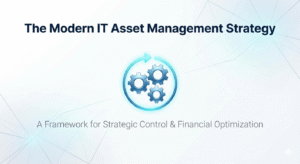Face it—you don’t really know how good or bad your security is.
That’s probably a scary thought for some of you and most certainly annoying to any IT professionals reading this who do know. But consider the why of this statement for a moment. Security isn’t as simple as setting cruise control. It’s a journey with no destination, and you have to pay attention all the time.
Vigilance is key, and it’s not too difficult to make a practice of it. After all, the potential costs of a security breach far outweigh precautionary steps that can be taken to avoid it.
Start with a Security Audit
Have your MSP (Managed Service Provider) or internal IT team discuss the precautions they are taking as well as the training they provide to your staff and end users. This should be done at least once a year in order to identify potential risks and vulnerabilities to your current systems. Are there any security gaps that need attention? These can include data encryption, implementing strong passwords, or updating current software.
Implement Cybersecurity Best Practices
Just like when you leave your home, lock the doors, and set the alarm, there are best practices for IT security you can implement to help mitigate risks.
- Strong Passwords and MFA – A weak password is one of the most common causes of a cybersecurity breach. Change your passwords regularly, avoid using duplicate passwords for different accounts and software, and create your new passwords with a minimum of 12 random characters. A password manager can make this easier while adding additional security. Also – be sure to have multi-factor authentication turned on and enforced.
- Educate Your Team – Even the smallest amount of training around how to spot cybersecurity red flags can go a long way. Your employees can help keep an eye out for anything that appears fishy, like fake domain names or strange sender details.
- Ensure Software is Up-to-Date – Software companies issue constant patches to fix bugs and, more importantly, security issues. Keeping your software up-to-date is vital to ensuring the best protection from cyber threats.
- Use Secure and Approved Connections – The rise of hybrid and remote work presents another challenge to security as employees spend more time working away from the office. Make sure there are protocols in place for using secure connections when on-the-go, such as a secure VPN (Virtual Private Network).
- Check Your Cyber Insurance – Don’t just renew it every year, pay the premium, and forget about it. Get your MSP or internal team involved so you are genuinely protected and not just checking boxes.
This is not an exhaustive list, rather it’s a place to start. IT security is ever-changing, and there’s always more you can do to safeguard your business. Do what you can, and get help for the rest.
You Aren’t Alone
Everyone gets attacked—small businesses and medium businesses, even large enterprises. Every cloud provider such as Google, Amazon, and Microsoft has had issues.
Protect your reputation, profits, and people. There is no auto-pilot on the security journey, but paying attention to the road isn’t that hard if you are committed to it. And there are always folks who can help.
There are many great MSPs across the country, and we’re one of them. No matter what part of the world you’re in, KME can help you get the right resources.





